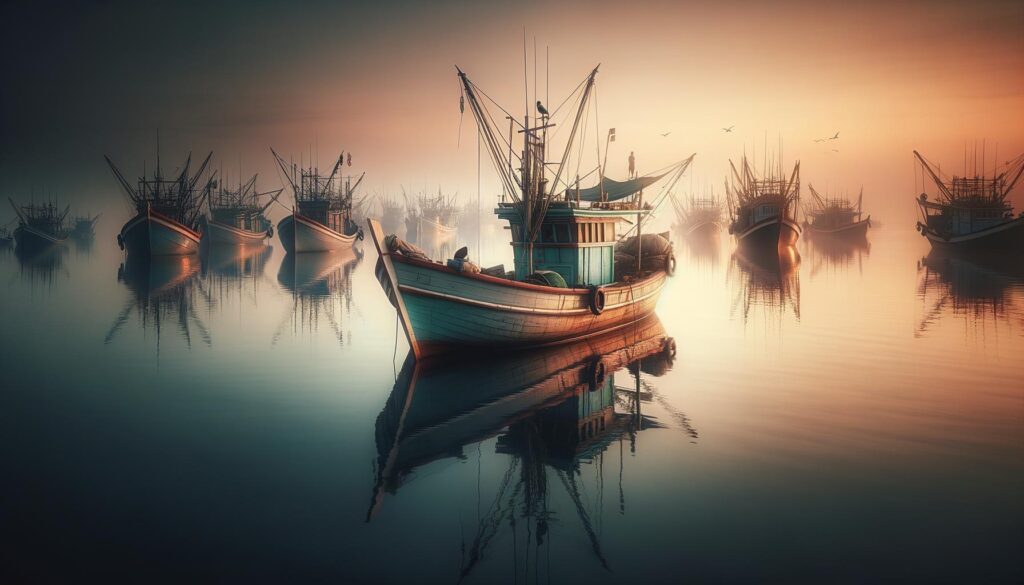Exploring the World of Fishing Boats: A Comprehensive Guide
The Evolution of Fishing Boats
Fishing boats have a rich history that dates back thousands of years. Originally, simple canoes and rafts were used by ancient cultures to navigate rivers and coastal waters, primarily for sustenance. Over time, as fishing techniques advanced and the demand for fish grew, so did the complexity and capacity of fishing vessels. The evolution of fishing boats can be divided into several key phases, each marked by significant technological advancements and changes in fishing practices.
In the early days, fishing boats were crafted from wood and powered by sails or oars. These vessels were designed to be sturdy yet nimble, capable of handling the unpredictable nature of the sea. As trade and exploration expanded, the need for more efficient and larger boats became apparent. The introduction of steam engines in the 19th century revolutionized fishing, allowing boats to venture further into the ocean with more reliable power sources. This was a pivotal moment in the history of fishing boats, as it enabled deep-sea fishing, which greatly increased the variety and quantity of fish that could be harvested.
Today, fishing boats come in a variety of shapes and sizes, each tailored to specific fishing methods and environments. From small, agile dinghies used in shallow waters to large trawlers designed for deep-sea fishing, the diversity of fishing boats reflects the wide range of fishing activities around the world.

Types of Fishing Boats
The world of fishing boats is vast and varied, with each type designed for particular fishing environments and techniques. Here are some of the most common types of fishing boats:
- Skiffs: These are small, flat-bottomed boats ideal for shallow waters and calm seas. Skiffs are often used for freshwater fishing and are easy to maneuver.
- Trawlers: Known for their robust build, trawlers are designed for deep-sea fishing. They are equipped with powerful engines and large nets, making them suitable for catching a variety of fish species.
- Center Consoles: Versatile and popular among recreational anglers, these boats offer ample deck space and are equipped with advanced navigation and fishing equipment.
- Catamarans: With their dual-hull design, catamarans provide stability and speed, making them excellent for both deep-sea and coastal fishing.
Understanding the different types of fishing boats is crucial for selecting the right vessel for your fishing needs, whether you’re looking for deep sea fishing boats for sale or a simple skiff for a day on the lake.
Choosing the Right Fishing Boat
When it comes to selecting a fishing boat, several factors must be considered to ensure you choose the right vessel for your needs. Whether you’re searching for deep sea fishing boats for sale or a versatile vessel for inland waters, these key considerations will guide your decision:
- Fishing Environment: Consider the type of water you’ll be fishing in—whether it’s freshwater lakes, coastal areas, or the open ocean. Each environment requires a boat with specific capabilities and features.
- Fishing Techniques: Different fishing methods, such as trolling, casting, or netting, may dictate the type of boat you need. Ensure the boat you choose is equipped to support your preferred fishing techniques.
- Size and Capacity: The size of the boat will affect its capacity and stability. Larger boats can carry more passengers and gear, making them suitable for longer trips and larger catches.
- Budget: Fishing boats range widely in price, so it’s important to establish a budget that includes not just the purchase price but also maintenance, fuel, and equipment costs.
Taking these factors into account will help you find a fishing boat that meets your needs and enhances your fishing experience.
Maintaining Your Fishing Boat
Once you’ve acquired your ideal fishing boat, maintaining it is crucial to ensure its longevity and performance. Regular maintenance not only keeps your boat in top condition but also ensures safety on the water. Here are some essential maintenance tips:
- Regular Cleaning: Saltwater can be corrosive, so it’s important to rinse your boat with fresh water after each use to prevent salt build-up. Regular cleaning also helps maintain the boat’s appearance and prevent wear and tear.
- Engine Maintenance: Regular engine checks and servicing are vital to ensure your boat runs smoothly. Change the oil and replace filters as recommended by the manufacturer to avoid engine problems.
- Inspect Hull and Deck: Regularly inspect the hull and deck for any signs of damage or wear. Repair any cracks or chips promptly to prevent further damage.
- Electrical Systems: Check the electrical systems, including lights and navigation equipment, to ensure they are functioning properly. Replace any faulty components as needed.
By following these maintenance tips, you can enjoy a safe and enjoyable fishing experience for years to come.
The Future of Fishing Boats
The future of fishing boats looks promising, with technological advancements paving the way for more efficient and sustainable fishing practices. Innovations in boat design, propulsion systems, and fishing technology are transforming the industry, making it more environmentally friendly and economically viable.
One of the most exciting developments is the integration of eco-friendly materials and renewable energy sources in boat construction. Solar panels, hybrid engines, and biodegradable materials are becoming more common, reducing the environmental impact of fishing boats. Additionally, advancements in navigation and fish-finding technology are enhancing efficiency, allowing anglers to locate fish more accurately and reduce bycatch.
As the demand for sustainable fishing practices grows, fishing boats will continue to evolve, embracing new technologies and designs that prioritize environmental conservation. For those interested in deep sea fishing boats for sale, staying informed about these trends can help you make a choice that aligns with both your fishing goals and environmental values.
